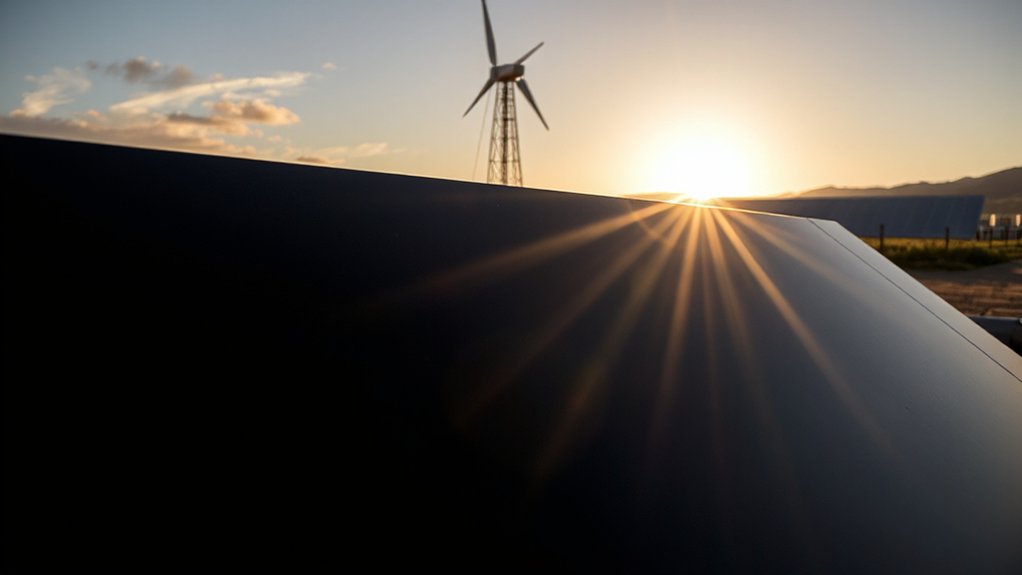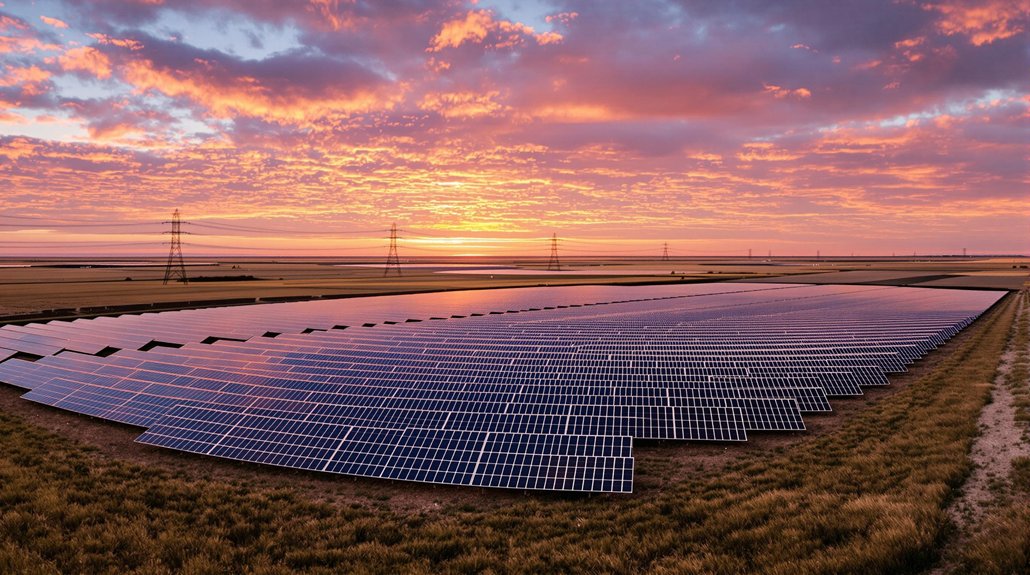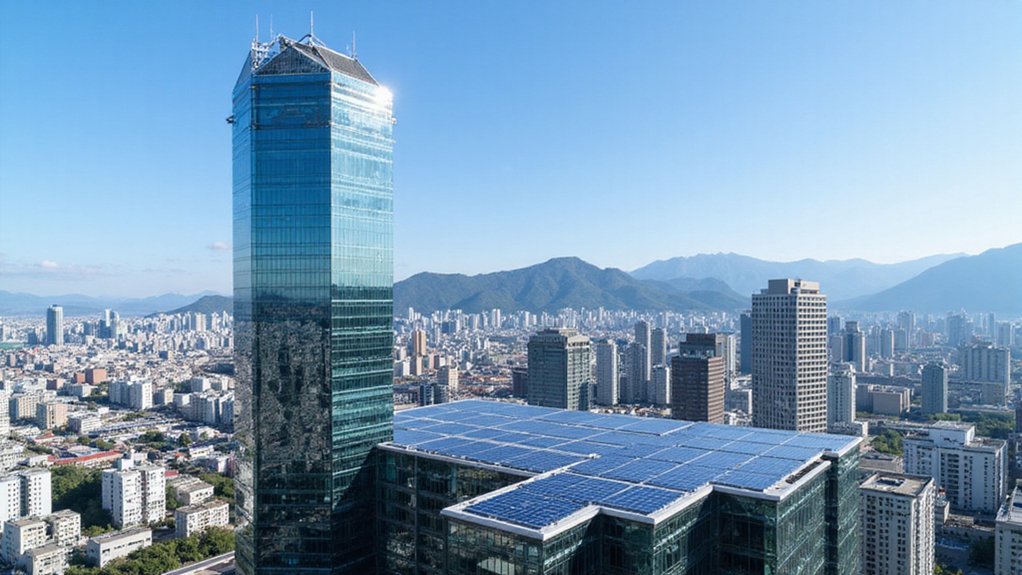Light enters. But it doesn’t leave. That’s the whole point of the revolutionary “blacker than black” material Spanish scientists have developed for solar towers. This stuff absorbs a mind-blowing 99.5% of sunlight, making traditional solar tech look like a cheap knockoff.
The material consists of copper cobaltate nanoneedles – tiny needle-like structures patented by UC San Diego – coated with aluminum-doped zinc oxide (AZO). These nanoneedles act like a light sponge, trapping photons in their complex geometry and refusing to let them escape. The unique structure maximizes surface area and minimizes reflection. Pretty clever, right?
At 99.5% absorption, this new coating outperforms both black silicon (a measly 95%) and carbon nanotube carpets (around 99% but with durability issues). The nanoneedles don’t just work well – they keep working well under brutal conditions that would destroy lesser materials.
Let’s face it, concentrated solar power plants get hot. Really hot. Hundreds of degrees Celsius hot. Most materials would break down faster than a cheap umbrella in a hurricane. Not this stuff. The copper cobaltate nanoneedles with their zinc oxide coating maintain performance while enduring temperatures that would make your oven cry. Unlike geothermal systems that boast 96% capacity factor, solar technologies have traditionally suffered from intermittency issues.
Researchers at the University of the Basque Country (EHU) designed this material specifically for central solar tower plants, where arrays of mirrors focus sunlight onto receiver tubes. The increased absorption means more energy captured and less wasted through reflection. The research was developed by EHU’s Thermophysical Properties of Materials group using specialized high-temperature equipment.
The real breakthrough here isn’t just the darkness – it’s the durability. Carbon nanotubes might look good in lab conditions, but throw some heat and humidity at them and watch their performance tank. These nanoneedles keep working day after day. The development aligns with broader research trends showing that black silicon technologies are gaining significant interest from major solar manufacturers for their enhanced light absorption capabilities.
For concentrated solar power to compete with other energy sources, efficiency is everything. This material delivers exactly that – more power from the same amount of sunlight. And in the energy game, that’s what separates the winners from the losers.
References
- https://interestingengineering.com/energy/ultra-black-nanoneedles-solar-energy
- https://pv-magazine-usa.com/2019/09/19/the-blackest-black-for-more-efficient-solar-cells/
- https://scienceblog.com/ultrablack-nanoneedles-help-solar-towers-hit-99-5-absorption/
- https://www.eurekalert.org/news-releases/1104303
- https://www.smithsonianmag.com/science-nature/a-spanish-breakthrough-in-harnessing-solar-power-1106582/
- https://interestingengineering.com/energy/light-absorption-nanoneedles-solar-towers








